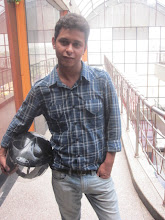Indian Railways to get its most powerful diesel locomotive
NEW DELHI, September 26, 2011 (ET): Locomotive major Electro-Motive Diesel Monday said it has completed the design for a high-horsepower locomotive for the Indian Railways. According to the company, the new design - WDG5 - would be developed into the most powerful diesel locomotive in the country with a power output of 5,500 bhp. "This diesel locomotive has an output of 5,500 bhp, which will make it the strongest diesel locomotive ever to run on the Indian rail network," the company said in a statement. The company further said that the locomotive has a tractive effort of 560 kn and can pull more load at higher speeds with less emissions than engines which are currently in use.
The design entails the usage of modern technologies like electronic fuel injection and more. "It includes electronic fuel injection, radial grids and high adhesion, lightweight fabricated bogies," Lehman said. The interiors of the locomotive would have crew-friendly features and modern controls. "It has modern driver interface and crew-friendly features, such as an air conditioned cab and toilet, which is another first for the Indian Railways' fleet."
The design entails the usage of modern technologies like electronic fuel injection and more. "It includes electronic fuel injection, radial grids and high adhesion, lightweight fabricated bogies," Lehman said. The interiors of the locomotive would have crew-friendly features and modern controls. "It has modern driver interface and crew-friendly features, such as an air conditioned cab and toilet, which is another first for the Indian Railways' fleet."







